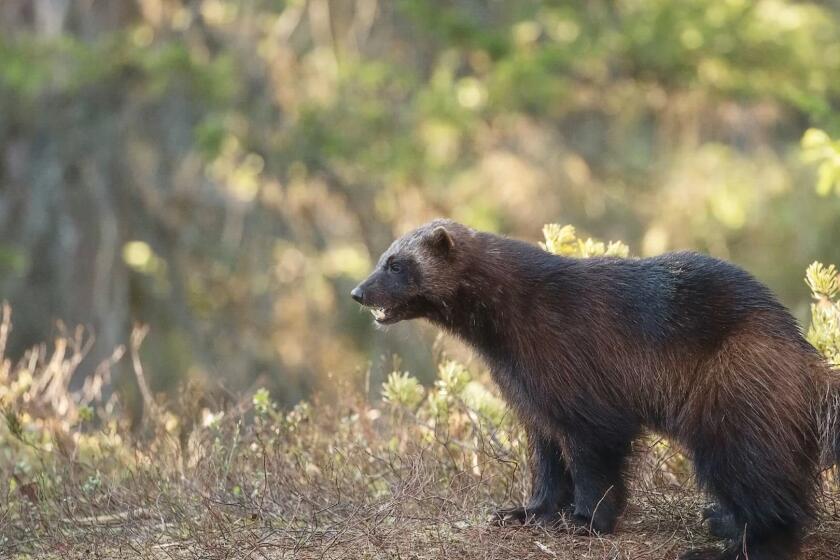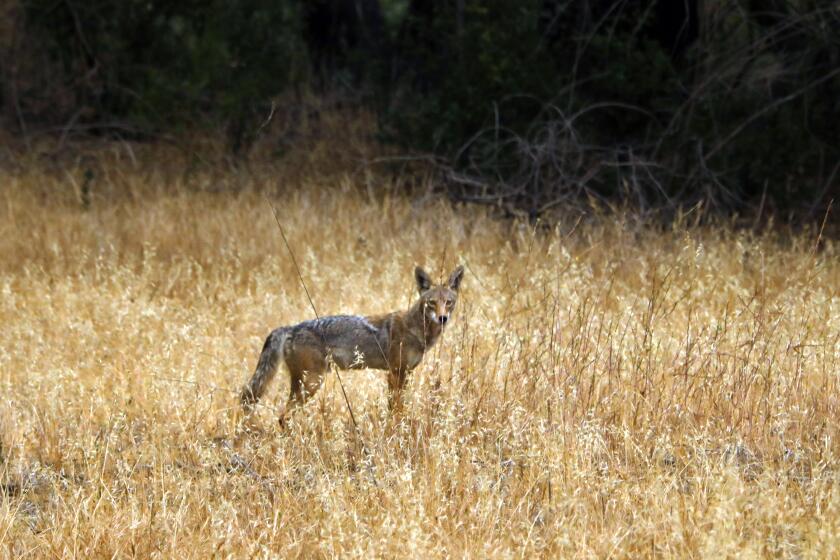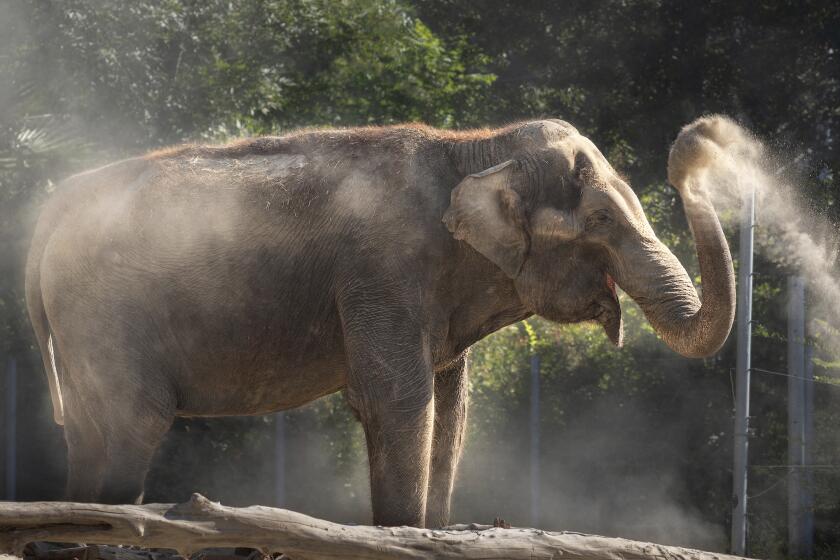Fish Corralled in River for Hungry Birds : Environment: Officials hope the experiment will help save animals along 45 miles of the Sacramento River stripped of aquatic life by pesticide spill.
Hoping to save endangered bald eagles and other birds from possible starvation, state wildlife officials on Monday built three “trout corrals” on a stretch of the Sacramento River that was stripped of all aquatic life by a deadly chemical spill north of Dunsmuir last week.
The corrals, made of chicken wire lashed to steel posts, will be stocked today with artificially reared hatchery trout in an unprecedented effort to offer eagles, ospreys and other birds and animals an easy meal.
“We’ve seen the raptors (birds of prey) traveling great distances looking for a food source, and that’s our main concern right now,” said Lanny Clavecilla, a spokesman for the state Department of Fish and Game. “We figure if we fence off a portion of the river and put some fish in there, it’s got to help them out.”
Meanwhile, authorities said levels of the spilled pesticide have dropped significantly in Shasta Lake, offering hope that the chemical could be reduced to harmless amounts by the time the contaminated water reaches endangered chinook salmon below Shasta Dam.
Because of the lower chemical readings, the state allowed Southern Pacific Railroad crews to ease safety precautions for their cleanup operation in the lake and to quadruple the volume of contaminated water they are pumping through their aeration cleansing system.
Bill Gengler, a Fish and Game spokesman, said the highest levels in the most recent samples were 2 parts per billion--down from the 97,000 parts per billion found when the pesticide slick was highly concentrated in the upper Sacramento River.
Also Monday, the state Fish and Game Commission temporarily barred fishing on a 45-mile stretch of the river and its tributaries in an attempt to allow one of California’s finest wild trout streams to rebound.
But in a concession to the region’s ailing tourist-dependent businesses, the commission agreed to permit so-called “catch and release” fishing on a three-mile stretch of river above the spill site and on the tributaries. Under catch and release rules, anglers must use barbless hooks and throw back whatever they reel in.
“Obviously the tourist industry has been hit very hard,” Gengler said. “There needs to be some reason for people to visit the area.”
The July 14 spill occurred after a Southern Pacific freight train derailed above Dunsmuir, sending a tanker car full of metam-sodium--a soil fumigant--tumbling into the river. Hundreds of people in nearby communities were evacuated and scores sought treatment for nausea, dizziness and other symptoms caused by vapors emitted when the chemical hit the water.
While investigators from several state and federal agencies continued to probe the accident Monday, scientists proceeded with their painstaking inventory of the environmental damage.
Their immediate focus is on the endangered bald eagles, ospreys--a protected species--and other birds that nest in the region. Scientists observing a handful of nests along the sterile waterway have seen the birds hunting far and wide in search of a substitute for the hundreds of thousands of fish poisoned in the spill.
Paul Wertz, a Fish and Game spokesman in Redding, said scientists watching one osprey nest noted that a 1-month-old chick was “chirping and clearly in need of food.”
“The observers watched the nest for a day and did not see any fish brought in,” Wertz said. “The next day they heard the chick giving a hunger call.”
Over the weekend, officials responded to such distressing observations by placing live trout in two livestock tanks on the river bank. Although the fish ultimately died because of high temperature in the tanks, the ospreys “did manage to take one or two of those fish and feed the chick.”
Buoyed by such promising results, state biologists decided Monday to try the experimental “trout corrals” at three key points along a five-mile stretch of river above the northwestern arm of Shasta Lake. About 300 rainbow trout from a local hatchery will be released into each corral, which will encompass about an acre of water and be built within view of the nests.
“It takes a lot of energy to tote a trout in the air for miles, and we don’t believe (the birds) are able to do it,” Wertz said. “This is a grand experiment but . . . we think it will provide a ready meal for the birds and any raccoons or other critter that comes along.”
Early Monday, all restrictions on the river area were lifted and resorts that emptied in the days after the spill reopened. Portions of the lake near the pesticide plume remain off-limits.
“We all seem to agree now that the river has cleansed itself and is safe once again,” said Shasta County Health Officer Dr. Stephen Plank.
More to Read
Start your day right
Sign up for Essential California for news, features and recommendations from the L.A. Times and beyond in your inbox six days a week.
You may occasionally receive promotional content from the Los Angeles Times.






